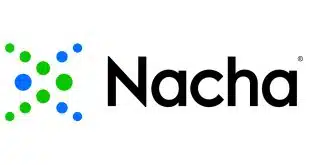10 Tipping Points for the Payments Industry
Part 8
From the way alternative-payment options are treated by the big players in the electronic- payments industry, you would think these options carried infectious diseases. Not long ago, a payments executive on the treasury side of a major national retailer lamented that every time the finance side of the company came up with a better way to pay, “the business side of the house would wring its hands and worry about somehow losing some transactions. We always fought to a stalemate,” he said.
Yet, this is an industry that has historically eschewed innovation, relies increasingly on punitive fees to make ends meet, and crosses its fingers in the hopes that young consumers won't abandon it. It's high time it got over the fact that the limited array of decades-old, bank-provided forms of payment just don't cut it in today's transactional environments.
After all, nobody died while PayPal cleverly maneuvered its way through several years of land mines laid by the card associations, staking a claim to 10% of today's e-commerce market?arguably the most attractive market for electronic payments going. PayPal showed banks that optimizing their networks (that is, loading consumer accounts via the low-cost automated clearing house network while enabling and charging merchants at discounted signature card rates) and managing risk based on usage amounted to a better mousetrap for online purchasing.
And stored value has certainly found its place in the widening payments spectrum, with projections for dollar volume loads on these cards growing upwards of a trillion dollars in the next several years. But, while nearly two-thirds of all consumers have used these cards, banks have issued less than 10% of them. The simple fact is that by the time banks apply their normal pricing formulas to products like gift cards, they turn out to be two to eight times more expensive for both consumers and merchants to use than merchant or third-party equivalents.
Lots of companies are talking about financial-service innovations for the underbanked. But more than 60% of Western Union's customers are banked. And all of the users, mostly phone-in customers, in the fast-growing market for last-minute convenience payments are banked. As many as half of all walk-in bill payers at retail locations such as Wal-Mart and Radio Shack are banked. What gives?
Call it lifestyle convenience. It seems that a growing number of consumers just want to pay when, where, and how they like! And many of them want to monetize the value of their existing business relationships through payment instruments they choose to use.
So it's little wonder that new payments models are springing up all over. Think of Tempo Payments Inc. (formerly known as Debitman Card Inc.), which guarantees payments over the ACH network. The merchant that issues the PIN-based card integrates the “debit card” payment function with the consumer's existing loyalty card, and is eligible for merchant interchange when that card is used at other accepting merchant locations.
Pay By Touch uses biometrics to authenticate consumers at the point of sale for secure check cashing and ACH-based purchases. Just bring your finger to the store! First Data integrates Stop & Shop loyalty cards with ACH payment accounts for regular customers. FastLane requires only a valid driver's license for ACH payments. And the beat goes on.
The key features that these alternative payment types have in common is a real-time execution of the transaction, accompanied by a guarantee to the merchant or biller. In each case, they find a way to re-engineer the payment infrastructure in order to produce faster, better, and cheaper payments.
So the time for handwringing about alternative payments has long since passed. Consumers and merchants aren't waiting for banks to fill the product gaps. And the longer alternative-payment providers have to gain a foothold of experience and trust in the emerging-payments marketplace, the harder it will be for regulated financial institutions to carve out a viable place for themselves. Prognosis: Fast forward to five years from now, when market researchers project that as many as one in four online transactions could be paid for by alternative payment types such as PIN debit and consumer-pushed e-checks. Ditto for mobile commerce: Look for e-wallets to finally catch hold featuring stored value and PIN or PIN-less debit. Wildcard: Small banks and credit unions and small merchants have little to lose and lots to gain by supporting adoption of alternative payment types. What happens when the new, non-bank payment providers figure that out?
—Steve Mott




